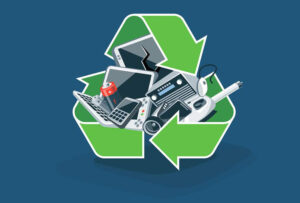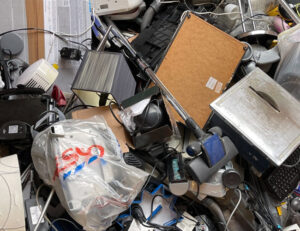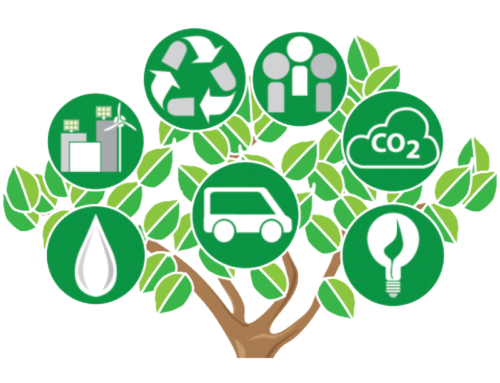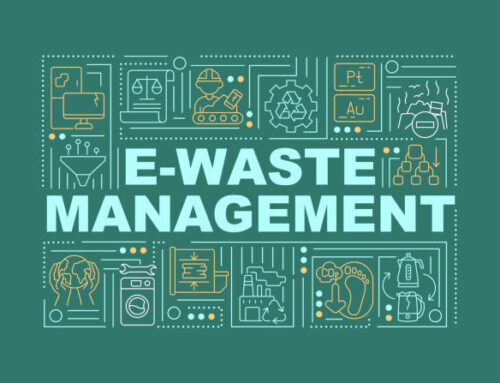
E-waste Recycling in India
E-waste Recycling Company India

Computer devices account for a large part to e-waste each year. Telecoms and electric equipment each produce 12%, and 7% of the total. The production of bulk electronic waste by businesses in the public, private, and government sectors, has 16% of it coming from individual families. The e-waste recycling company puts forth a lot of effort to recycle the e-waste.
India’s environmental and public health problems with electronic trash are becoming more and more significant. In 2020-2021, India processed 3.4 lakh tonnes of e-waste. According to CPCB, the generation of plastic waste per year is increasing by 3%, and the generation of e-waste is even higher, with waste produced totaling 7.1 lakh tonnes in 2018-19 and 10.14 lakh tonnes in 2019-20. Every year, there is a 31% increase.
When an electronic product comes close to the end of its “useful life,” it is sometimes referred to as “e-waste.” Electronic items including copiers, fax machines, TVs, VCRs, stereos, and computers are ubiquitous. Many of these items are recyclable, repairable, or reusable.
Health Hazards due to E-waste:
E-waste is frequently discarded under less-than-ideal safety settings and includes several toxic compounds discovered to be exceedingly damaging to both human health and the environment. The e-waste recycling company is responsible for doing it safely and with consideration for potential dangers. This causes various hazards to humans and the environment. Some of the populations vulnerable to the risks caused by e-waste are:
Informal Workers
 Since the majority of e-waste is unlawfully handled by employees working outside of properly established institutions, these informal employees frequently engage in unsafe and unregulated recycling practices that can have detrimental effects on their health.
Since the majority of e-waste is unlawfully handled by employees working outside of properly established institutions, these informal employees frequently engage in unsafe and unregulated recycling practices that can have detrimental effects on their health.
Unfortunately, the labor force that recycles has a poor literacy rate and limited knowledge of the risks associated with e-waste, which implies that many of these employees are inadvertently engaged in unhealthy activities.
An estimated 25,000 people, including minors, labor in primitive e-waste dismantling plants in Delhi alone; each year, these units remove 10,000–20,000 tons of e-waste. Exposed to poisons since they do not have the required personal protective equipment. E-waste recycling companies, make significant contributions to the reduction of e-waste in Delhi-NCR.
Susceptible Groups
The health concerns of e-waste are dangerous to vulnerable groups including children, the elderly, and pregnant women. 4-5 million youngsters between the ages of 10 and 15 are reportedly engaged in India’s e-waste recycling sector. The absorption of dangerous chemicals can stunt a child’s development and leave them permanently damaged.
The e-waste recycling operations lead to high blood lead levels in youngsters, who are particularly susceptible to lead poisoning. When exposed to e-waste, pregnant women run the risk of having spontaneous abortions, stillbirths, early deliveries, and low birth weights.
Importance of E-waste recycling:
Save the available natural resources:
Recycling obsolete or unused electronics will allow you to reclaim valuable resources. Natural resources are so saved and conserved as a result.
This occurs as a result of the ability of manufacturers to source raw resources from recycled garbage. Therefore, there is less of a need to travel to Earth in search of raw minerals.
Therefore, it is less necessary to obtain copper, lead, or metal from the natural world. To appreciate the amount of good this symbolizes, you must keep in mind that these resources are not limitless.
Emphasizing environmental population:
Prioritizing the safe handling, processing, and management of poisonous and hazardous compounds including lead, arsenic, and cadmium is one of its goals.
As you’ve read, separating dust from shredded particles and disposing of it in an environmentally responsible manner is one of the sub-steps in the processing of e-waste. E-waste can sometimes get salvaged, considerably reducing the environmental dangers that these materials frequently pose.
Reduces global warming and preserves landfills
Uncollected e-waste is often thrown in landfills and incinerators. We are lowering the quantity of e-waste accumulating at these locations by recycling it.
This is because rubbish in landfills can decompose and return to its natural state in two-thirds of cases. These wastes disintegrate and decay, releasing dangerous gases that act as greenhouse gases and significantly contribute to global climate change.
Activities like recycling e-waste, which aim to lessen these environmental problems, are not only useful but also life-saving because landfills also harm the water and soil in our local environment.



